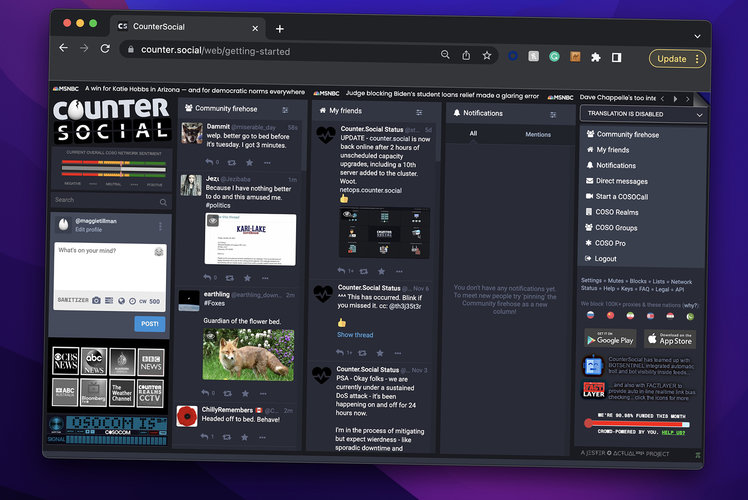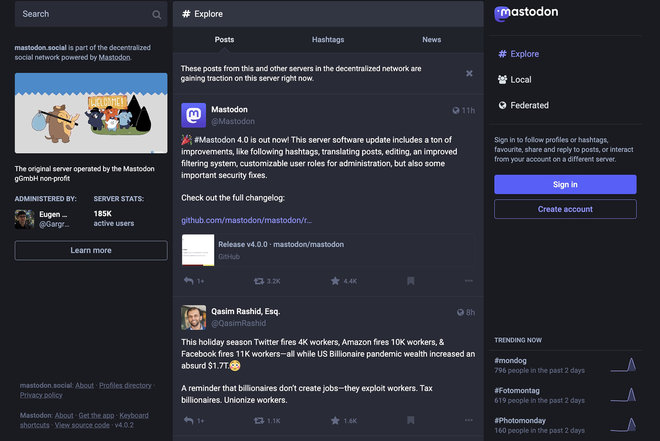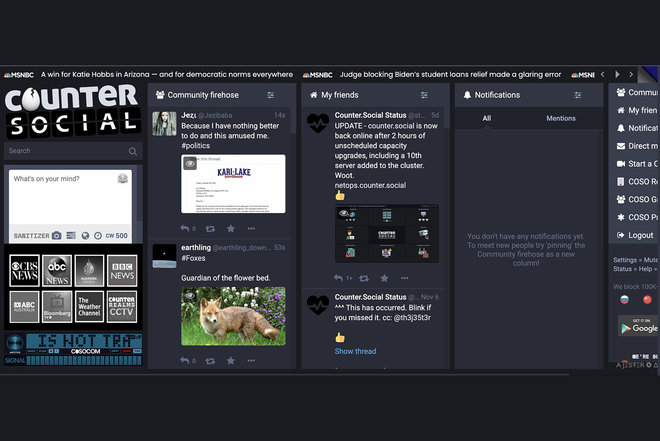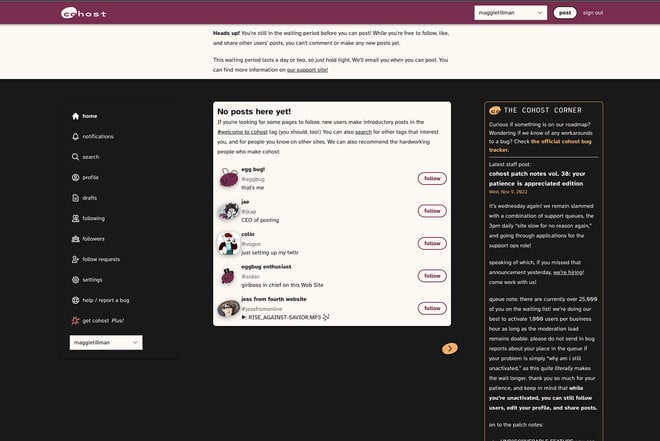
There’s a lot going on with Twitter right now. Elon Musk has taken it over, fired thousands of employees, and is rolling out (and rolling back) changes on a near-daily basis at this point. It’s pure chaos, honestly. If you’re uncomfortable with what’s happening at Twitter for whatever reason, you can simply choose to use another platform instead.
Best Twitter alternatives
Here are three unique alternatives to Twitter. We’re not just listing the most popular social networks here. We’re actually finding different sites that have a very Twitter-like experience or vibe.

Mastodon
- Website: https://mastodon.social
- Apple App Store: Mastodon app
- Google Play Store: Mastodon app
Mastodon is a free social media site that works much like Twitter. You can post “toots” (rather than tweets), follow other users and brands, and favourite (like) and boost (retweet) posts. It’s a decentralised open-source social networking platform. It was created by Eugen Rochko, the CEO and lone employee of the nonprofit organization Mastodon gGmbH.
By being decentralised, it allows users to create, host, and moderate their own communities, or “instances”, that can communicate with each other through a system called the Fediverse.
A few popular instances include PeerTube for videos, Funkwhale for music, PixelFed for photos, and NextCloud for files. Perhaps the most famous Mastodon instance is Truth Social, aka “the social network” of former US president Donald Trump. He began Truth Social shortly after Twitter banned him. There is no common Mastodon area for everyone – like with Twitter – so you’ll need to register on a specific Mastodon instance, which can be based on a geographic location, subject, or anything. You can join as many as you want and leave or switch instances at any time.
And you can follow people across instances, so picking one doesn’t keep you from communicating with those on other instances.

CounterSocial
- Website: https://counter.social
- Apple App Store: CounterSocial app
- Google Play Store: CounterSocial app
CounterSocial launched in November 2017, with its infrastructure based on the open-source code of Mastodon (another platform we recommended). CounterSocial is unique because it has a zero-tolerance policy against trolls, spam bots, misinformation campaigns, harassment, and political foreign influence. The pseudonymous hacktivist known as “The Jester” created CounterSocial because they claimed to be sick of disinformation – so they went ahead and developed a controlled or walled social network where all that could be moderated.
As of August 2022, the site has approximately 100,000 users and, according to its founder, it continues to see steady growth.
So, what makes it like Twitter? If you’ve ever used Tweetdeck, CounterSocial’s column-based interface will instantly be recognisable. You can delete, rearrange, or create columns, and columns can be based on hashtags, user lists, and topics. If you’re a free user, you can follow, like, reshare, and comment on posts and replies. You will need to pay for a pro account ($5 per month) to access more premium features, such as changing your status and setting posts to “explode”.

Cohost
- Website: https://cohost.org
Cohost is currently in beta. It’s an ad-free social media platform co-founded by Colin Bayer and Jae Kaplan. It first rolled out to select users in February 2022.
On Cohosts, posts fall in a timeline that goes vertically, just like Twitter. Instead of the timeline being algorithmically powered, posts are always listed in the order they were posted. It feels like a classic blogging website. Posts have no character limit, and there’s an option to make multiple pages for different themes or projects. You can make a collaboratively co-owned page that multiple people can use, like for podcasts. Co-host offers a subscription to unlock premium features – such as larger uploads – and promises to “never sell your data”.
You don’t need an invitation to join Cohost. But if you don’t have an invite, you can only look around and may need to wait up to “a day or two” before posting.

Want more Twitter alternatives?
Here are a few other options – but these are more popular, and chances are, you’ve already tried them:
Tumblr: More about long-form blog-style content, with the ability to share media elements such as photos, videos, and GIFs.
LinkedIn: More for business professionals who want to network, but it has a news feed and the ability for users to follow one another and share posts, photos, videos, polls, etc.
Discord: Prominent social media site with over 150 million active monthly users. But there is no feed. There are chat rooms where you can communicate via voice or video calls.
Clubhouse: More for people who like Twitter Spaces. It lets you hosts live audio chatrooms. Clubhouse gained popularity at the peak of the pandemic.
